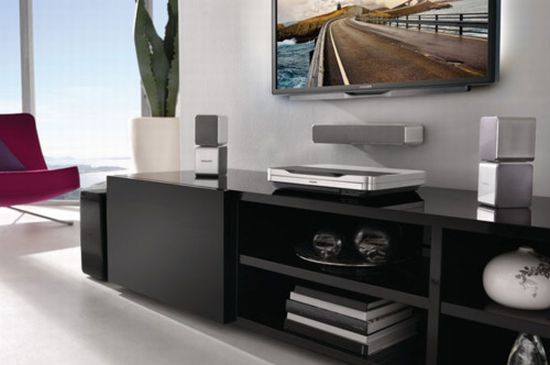Many a time after a buying a home theatre system, we get confused and intimidated while setting it up. Any good electronic system requires some complex set of procedures while setting it up, which if not followed will not lead to the desired output. Just some tiny technical know-howâs can lead to the perfect sound from your home theatre. Here, we will see how we can go about those seemingly complex, yet simple steps to set up the home theatre system.
So just follow the instructions below and enjoy your music.
Firstly, you need to search for the digital output which is located at the back of the DVD player. It can be labelled as either âcoaxialâ or âopticalâ. Only one of them should be used. The digital cable generally carries all the six channels of sound from a DTS movie soundtrack to Dolby Digital 5.1. It also carries a Digital PCM Stereo. It should be connected to the rear of the receiver to the digital audio input. After this, you have to connect the video.
Video
Firstly, you will have to decide whether you want to route the video cables directly to the TV or via the A/V receiver. One advantage in routing it via A/V receiver is that you will get to see the on screen menu on your TV screen for your A/V receiver. If the A/V receivers are designed well, the picture quality does not usually degrade, provided the video inputs are wideband. If itâs 37 MHz or greater, it will carry HDTV without losses.
You will have to connect separate cables to carry the signal from your DVD player to A/V player and then to your TV display. Generally, there are multiple video outputs in a DVD player. If the AV receiver of your TV handles component video, you should use that connection as it gives the best picture possible from the DVDs. If your TV does not have the Component Video output, the S-Video output is the next best thing.
Audio
You should never raise the level of the surround speakers too high, because you will be unable to hear them clearly. Surround sound is not meant for attention. Surround sound adds a third dimension and enhances your living experience musically. You will have to appreciate the subtlety of the environment that it will create. Sometimes you may not even understand if the surround sound is on until a fight sequence occurs, or maybe when your phone starts to ring. Also, you should note that unlike big budget films, low budget movies seldom have a wide diaspora of surround sound effects to draw you in.
Plasma screen
You must never run your HDTV in its brightest mode. It cuts down the life of the projector bulb, and thereby the set. The longevity of the plasma TV will shorten if you always run it too bright. On the contrary of getting a better picture by increasing brightness, an optimum brightness and contrast can smoothen the shadow details and improves the highlights. A simple test to check perfect brightness is to focus on the white areas on the screen, be it a shirt or a jacket on an actress. If you can see the finer details of that clothing, the brightness is fine. If you cannot, you need to reduce its level to enhance the clarity and details of the image.
Sub woofer
Never throw away the sub woofer just because you are not able to hear good sound out of it. Sound quality largely depends upon its positioning. And sometimes, a few chairs and tables can alter the balance. Initially, try putting the sub woofer in a corner and then gradually reposition it if the sound is not too good. The volume of the sub woofer should not be turned too high. It should be gradually increased till a slight deep bass is detected. Then it should be slowly increased till it is found to be in balance with the midrange and treble. Some adjustments can be made with the remote control during some movies as the bass levels might be a bit loud. If you look at the controls at the back of a sub woofer you will find two adjacent switches labelled âcrossoverâ and âbypassâ. The sub woofer should be set at bypass if it has that setting. Else, the crossover control should be adjusted to its highest frequency setting. You must never use speaker cable to connect the AV receiver with the sub woofer. It is required only when an amplifier or a receiver lacks a subwoofer output jack.
Remembering these simple steps can enhance your surround sound experience considerably in your home theatre.





